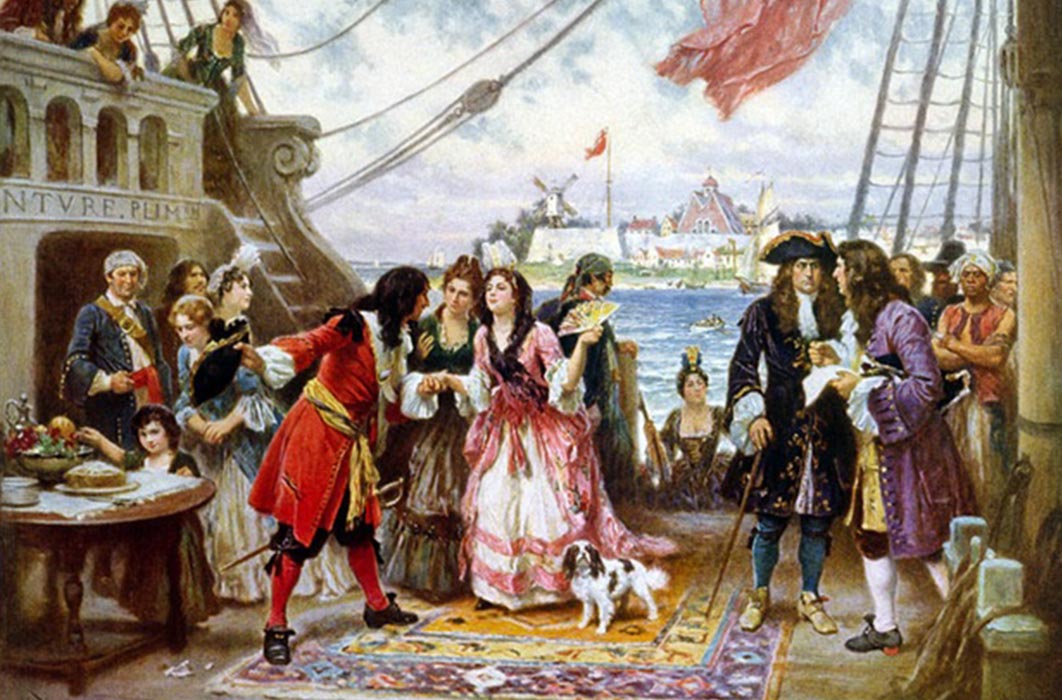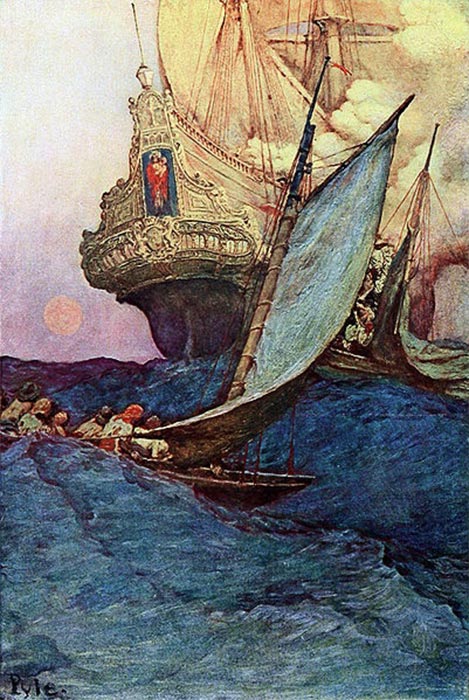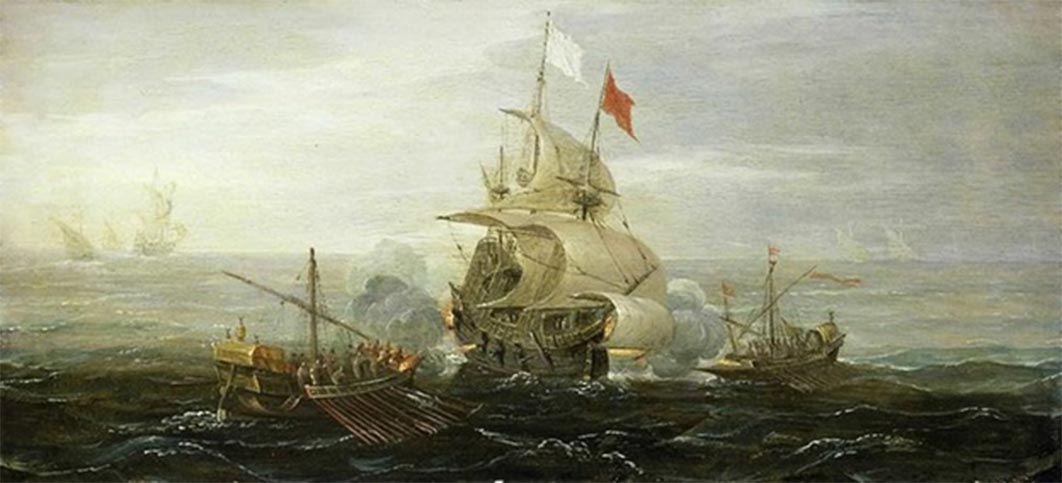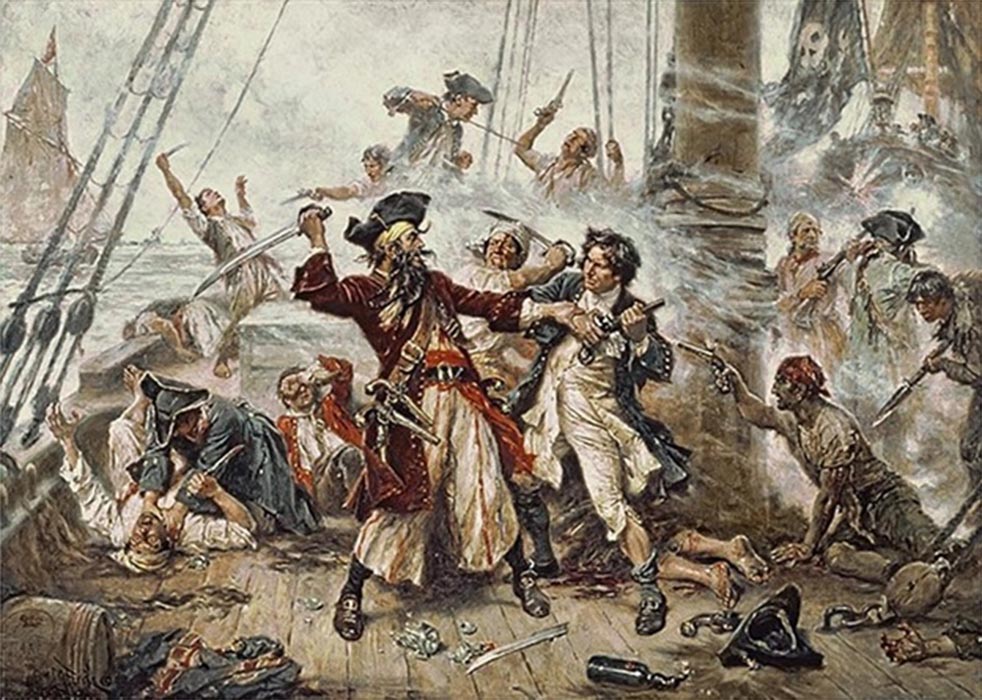
Pirates of the Northern Seas and Scotland’s Oceanic Criminals
Pirates, maybe even more than mermaids and sea serpents, are the most fascinating and misunderstood entities of maritime history and while it is known today that mermaids were seals and giant serpents were the washed up carcasses of whales, the realities of piracy on the high seas is still enveloped in myths and legends.

An Attack on a Galleon: illustration of pirates approaching a ship by Howard Pyle (1905) (Public Domain)
Although Johnny Depp and Pirates of the Caribbean might be the archetypal impression of those swashbuckling oceanic criminals for the younger generation, the older generation may recall with nostalgia Peter Pan or Treasure Island, that populated childhood imaginations of yester year. Stepping beyond these popular depictions of pirates that do not necessarily follow historical fact, one is bound to ask: who were these ocean-bound criminals?

French ship under attack by Barbary pirates, by Aert Anthoniszoon (ca. 1615) National Maritime Museum, England. (Public Domain).
The Mythical Pirate
17th-19th century books have greatly embellished and romanticized narratives of pirates and Daniel Dafoe’s A General History of the Pyrates (1724) is today often referred to as a historical reference, but it was in the most part fictional. Literary giant Robert Louis Stevenson, in his classic tale of ‘buccaneers and buried gold’ also heavily influenced popular perceptions of pirates and Treasure Island included such elements as treasure maps marked with an X, schooners, tropical Caribbean islands and one-legged seamen. But these fictional rouges with their Devonshire, west country accents, only soften-up the reality of real-world pirates who were often spree killing terrorists.
Historically, pirates preferred narrow channels and shipping lanes so that their prey could be chased along predictable routes, for example: the English Channel, around Gibraltar and the Strait of Malacca. One must not confuse pirates with ‘privateering’ as these captains operated under state issued licenses and their capture of foreign merchant ships was more of a war-like activity with a semblance of rules and regulations agreed upon between nations before military interaction ensued.

Capture of the pirate, Blackbeard, by Jean Leon Gerome Ferris (1718) Romanticizing the fierce and bloody battle between Blackbeard the Pirate and Lieutenant Maynard in Ocracoke Bay. (Public Domain)




